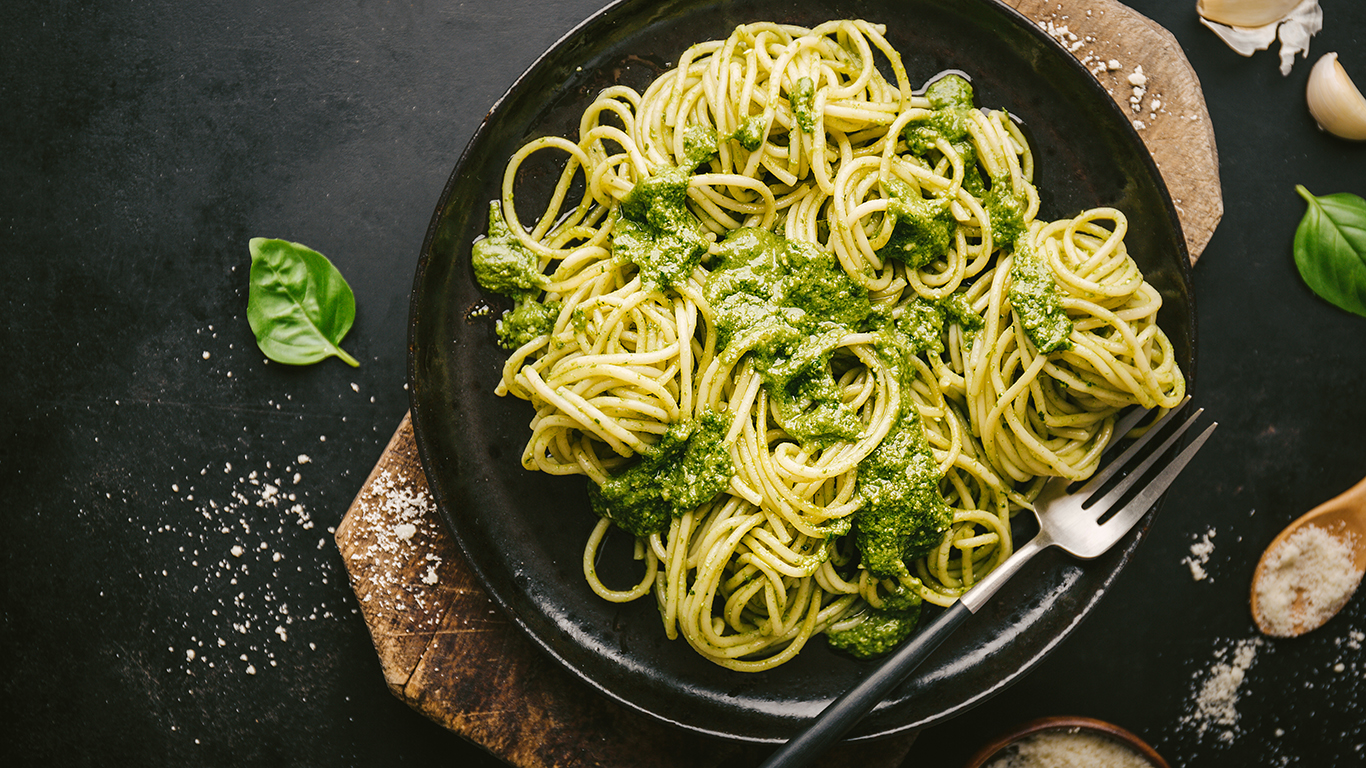
It’s hard to imagine Italian cooking without tomatoes. From caprese salad and bruschetta to chicken cacciatore, mozzarella marinara, eggplant parmigiana, and many kinds of pizza, they are essential — either fresh or in the form of sauce or paste.
And then there’s pasta: One of the most iconic of all dishes in Italy’s vast pasta repertoire — and quite possibly the most famous — is the gloriously simple preparation called spaghetti al pomodoro or spaghetti with tomato. Then there are sauces like Rome’s slightly spicy arrabbiata and amatriciana; the puttanesca of Naples (with olives, capers, and anchovies, as well as tomatoes); the bolognese (also called ragù) of the Emilia-Romagna region; the now-ubiquitous vodka sauce, invented only in the 1970s, possibly by a chef in New York City…. The list goes on.
Click here for the best pasta sauces that don’t have tomatoes.
But many of Italy’s best pasta dishes don’t involve tomatoes at all. They may seem definitive of Italian cuisine today, but while tomatoes were known in Italy as early as the mid-16th century, they weren’t eaten much there until the early 1700s, and it wasn’t until the 19th century that they became an important ingredient in the Italian kitchen. (The first published recipe for pasta with tomato sauce appeared only in 1839.)
In place of tomatoes, Italians enhanced their many forms of pasta with whatever ingredients were readily available to them — anchovies, clams, and squid or cuttlefish (and/or their ink) along the seacoast; wild game in the forests; butter, cream, and cheese in dairy country; and so on.
The key to classic Italian pasta preparations is simplicity. Some of the best examples involve only three or four ingredients. And many don’t really involve sauces at all — that is, instead of cooking a sauce separately and then adding it to the pasta, Italian cooks simply toss a few ingredients straight into the bowl of noodles and mix it all up. Some of the 15 “sauces” that follow are actual sauces, but many are simply great ingredients added to the bowl or pot.
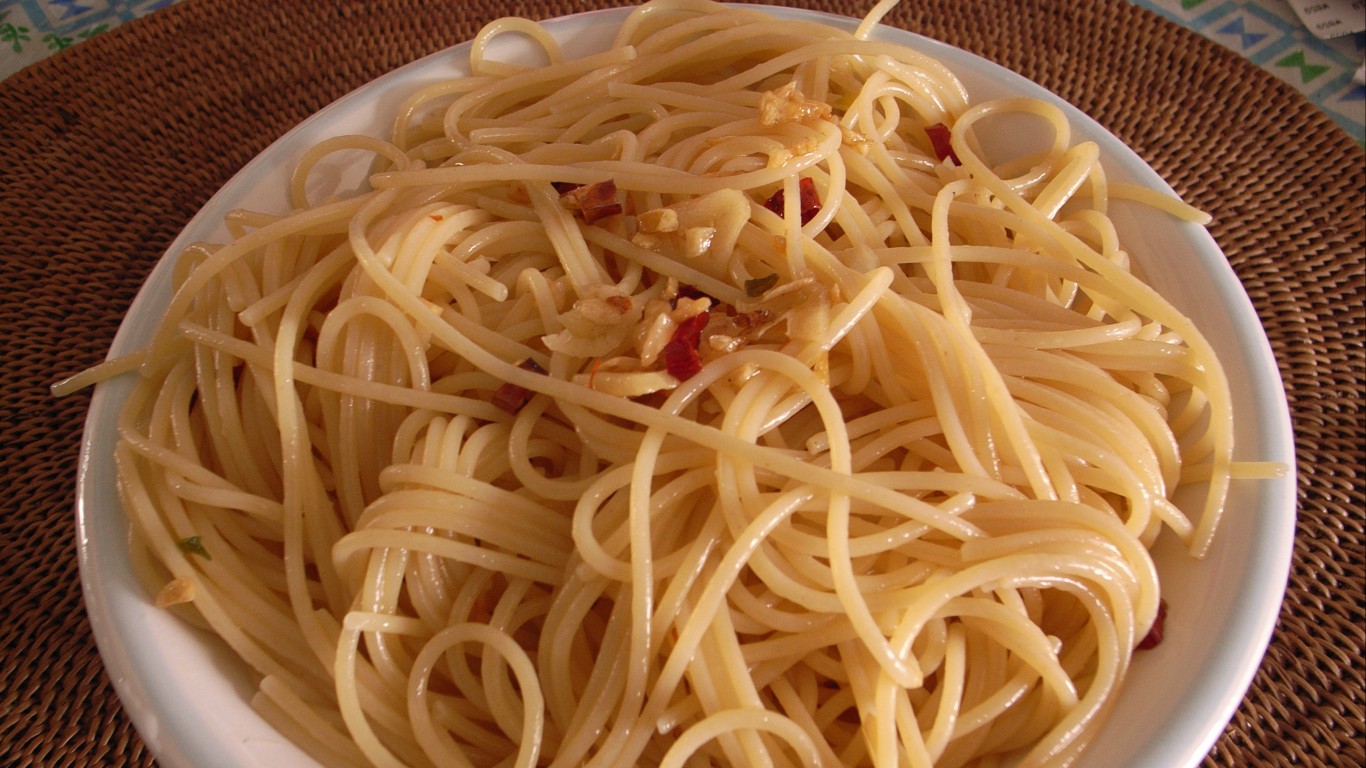
Aglio e olio (or aglio, olio, e peperoncino)
The name, which means “garlic and oil” (or “garlic, oil, and red pepper flakes”) is also the recipe. Originally from Naples, this simple preparation, traditionally used with spaghetti, combines olive oil, minced garlic, and red pepper flakes, sometimes with chopped parsley and/or breadcrumbs added. Nothing more is needed.
[in-text-ad]
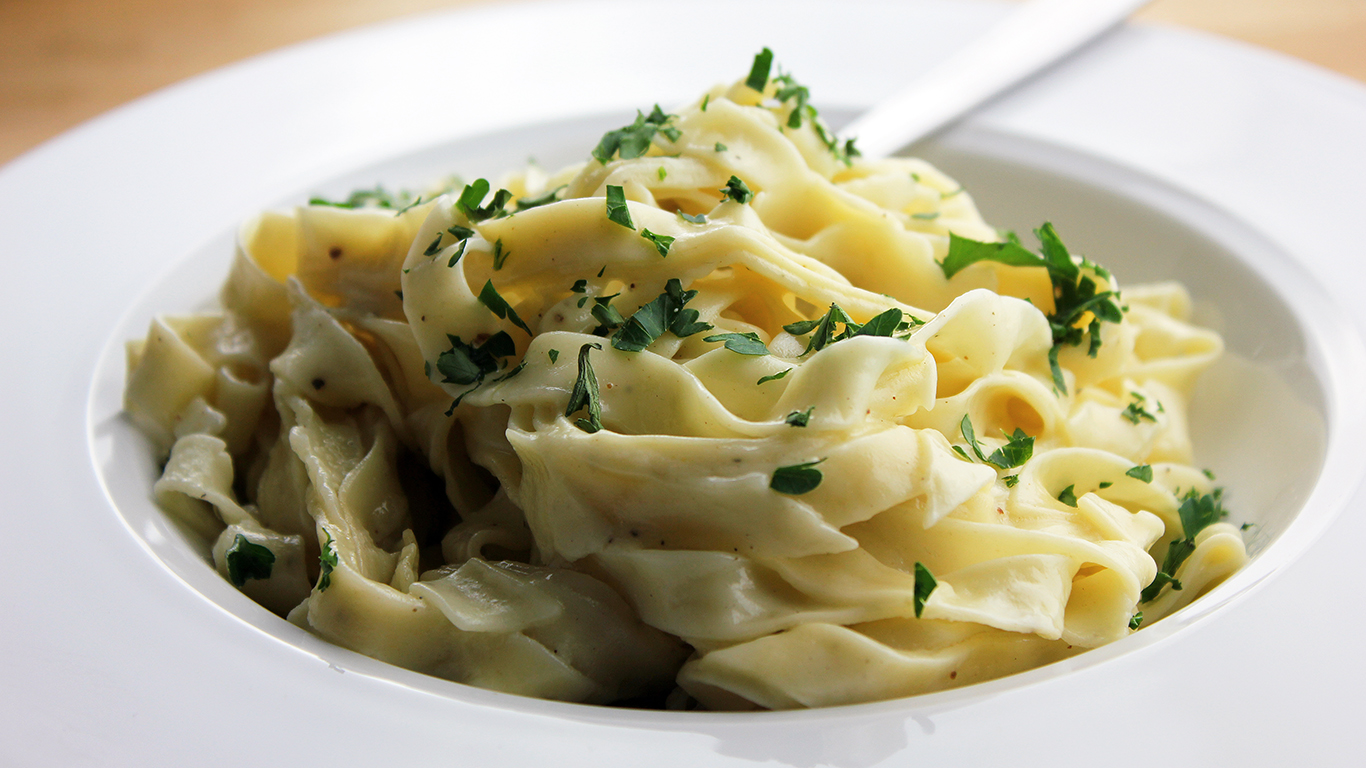
Alfredo (American)
The sauce Americans call Alfredo probably wouldn’t be recognized as such in Italy. Our version combines butter and parmesan cheese with heavy cream and usually garlic and parsley. Some versions add peas with ham, bacon, chicken, onions, or other meats or vegetables. The results can be delicious, but they probably shouldn’t bear Alfredo’s name (see below).
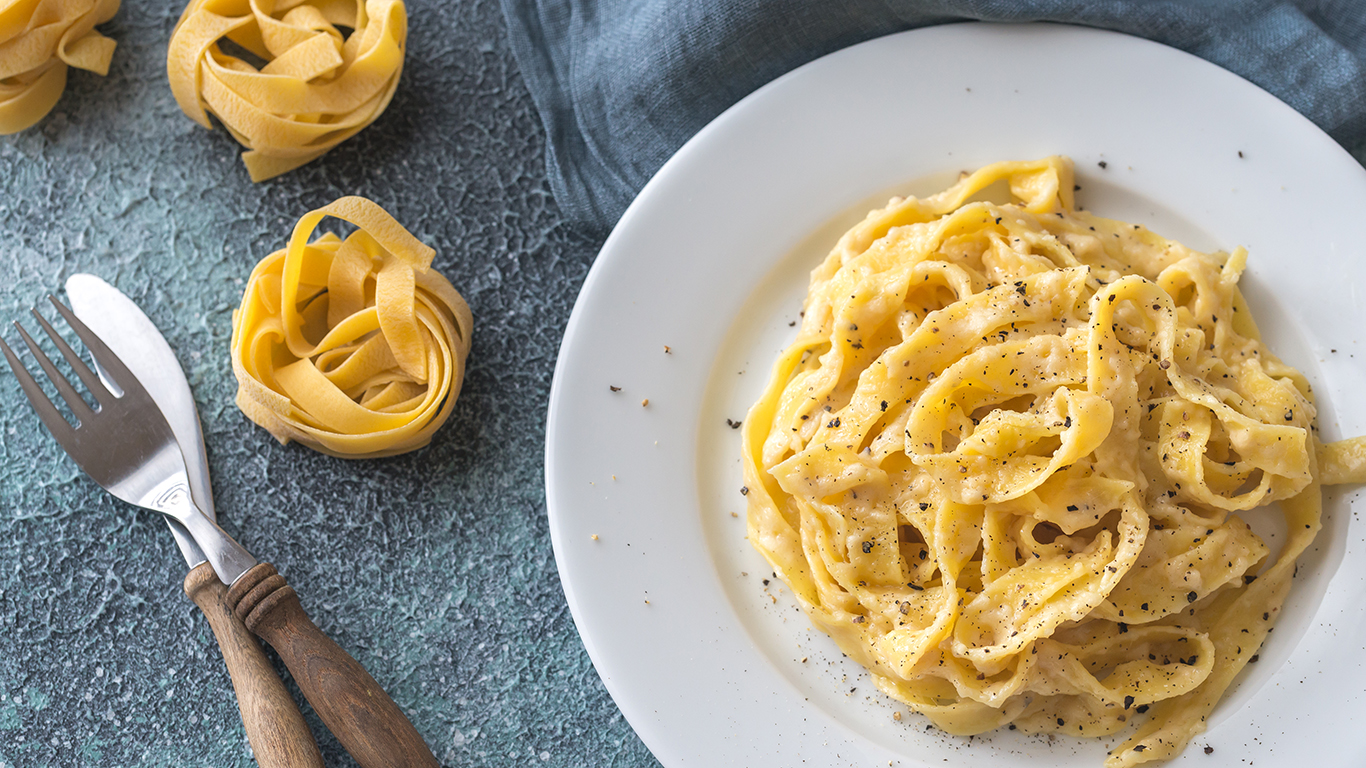
Alfredo (Italian)
Invented in 1914 by one Alfredo de Lelio at his Alfredo alla Scrofa restaurant in Rome, the original sauce was simply an emulsion of rich Italian butter (a lot of it) and parmesan cheese, with no other additions beyond a little salt and pepper. It was (and still is) served at the restaurant with fettuccine.
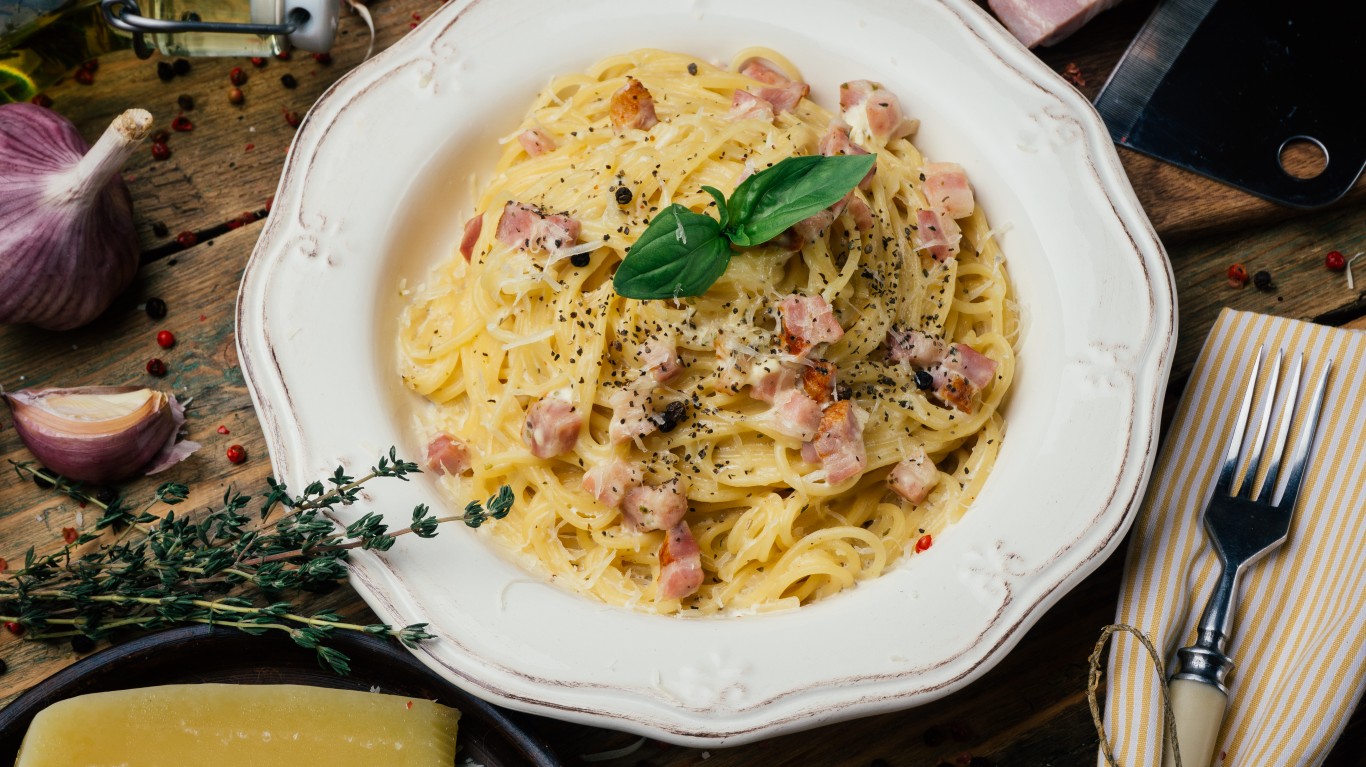
Alla carbonara
Nobody is quite sure where and when carbonara was invented or how it got its name (a carbonara would be a female charcoal seller, or the wife of a male one), but it has become one of the most popular pasta dishes, usually made with spaghetti. It combines whisked eggs with parmesan and/or pecorino cheese, olive oil, small pieces of guanciale (cured pork cheek), pancetta, or bacon, as well as plenty of black pepper. When properly made, it has a creamy consistency, but purists never add actual cream.
[in-text-ad-2]
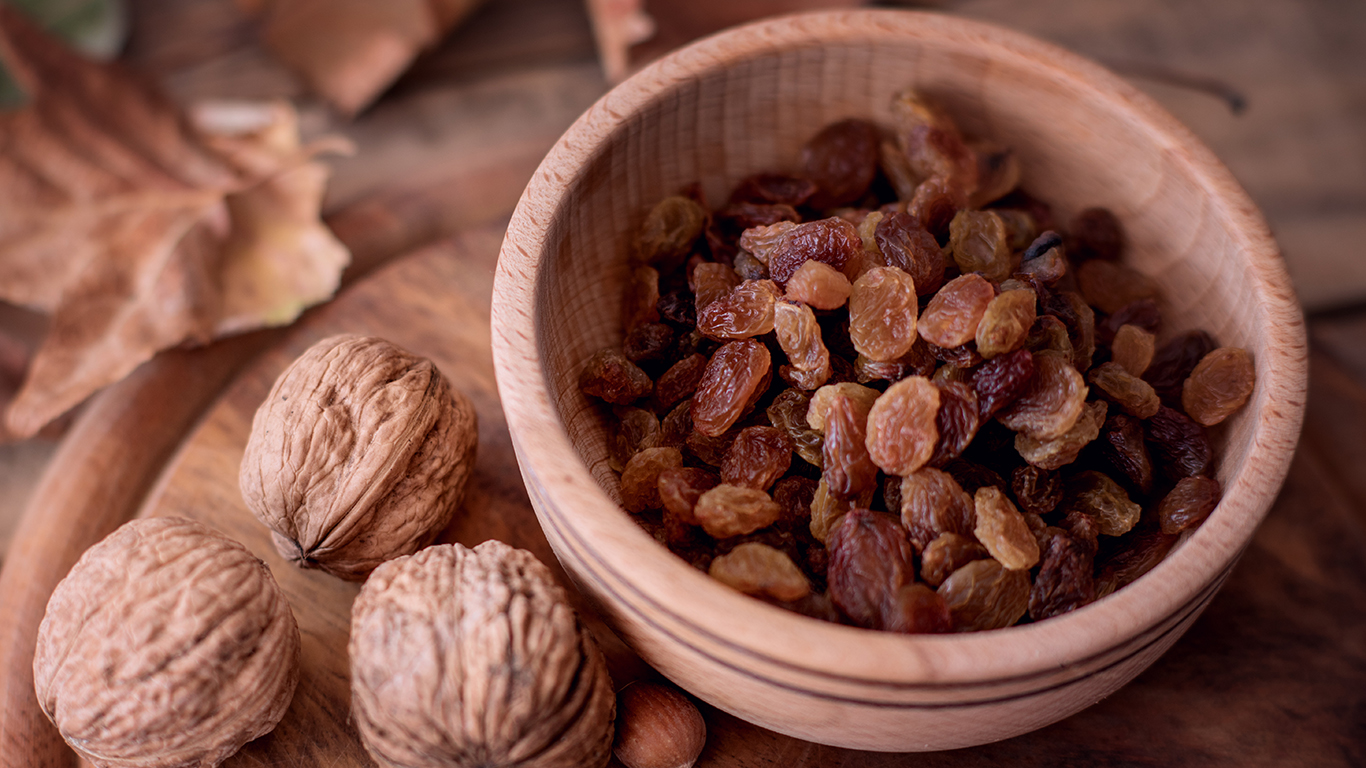
Alla foriana
Named for the town of Forio on the island of Ischia, a volcanic outcropping in the Bay of Naples, this olive oil-based sauce combines walnuts and raisins — a pairing that dates to medieval times — with pine nuts, oregano, and plenty of garlic.
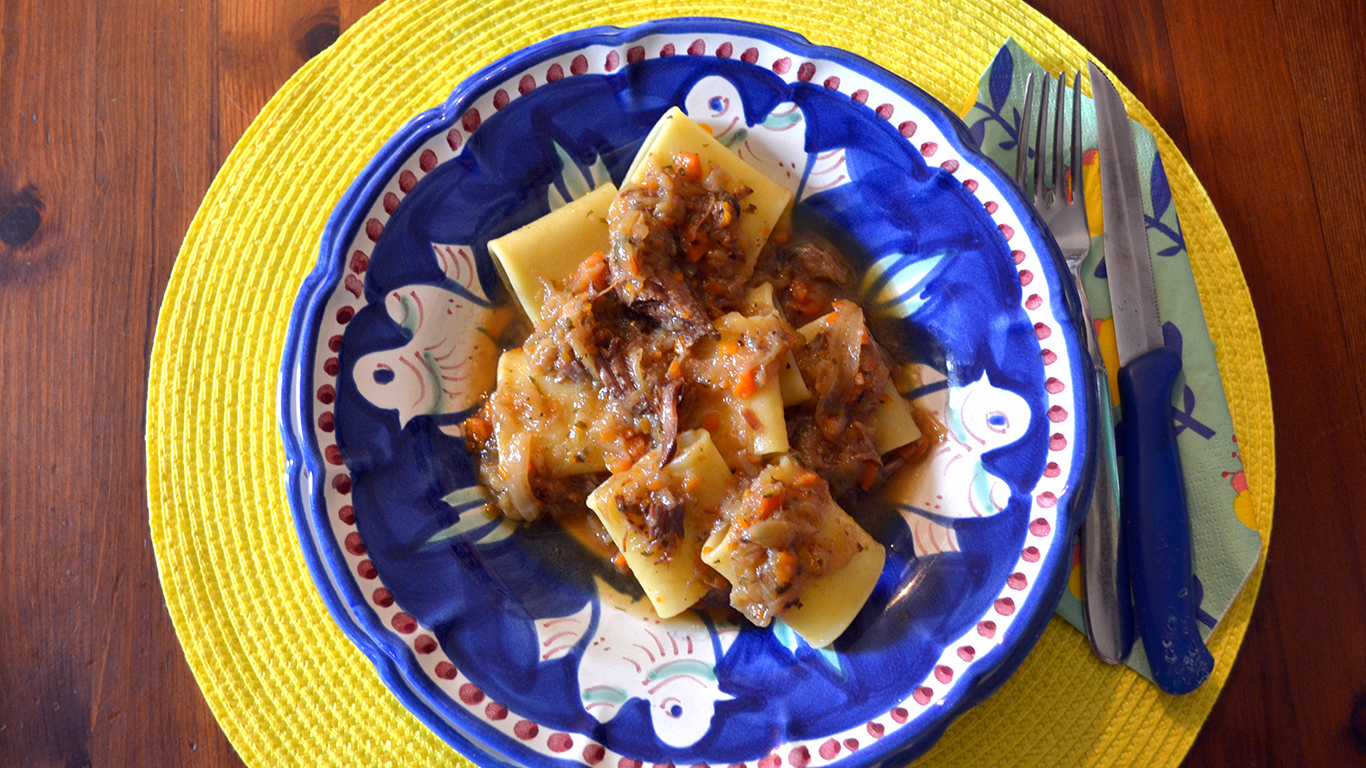
Alla genovese
Despite a name that links it to the northern Italian capital of Genoa, this is a Neapolitan dish, little known outside the region of Campania in southern Italy. It may date from as early as the 15th century, and was possibly introduced to Naples by Genoese sailors, though nothing quite like it exists in Genoa. Traditionally served with the long tubular pasta called ziti, it’s made with beef and a lot of onions, plus some carrots and celery, all slow-cooked for hours.
[in-text-ad]
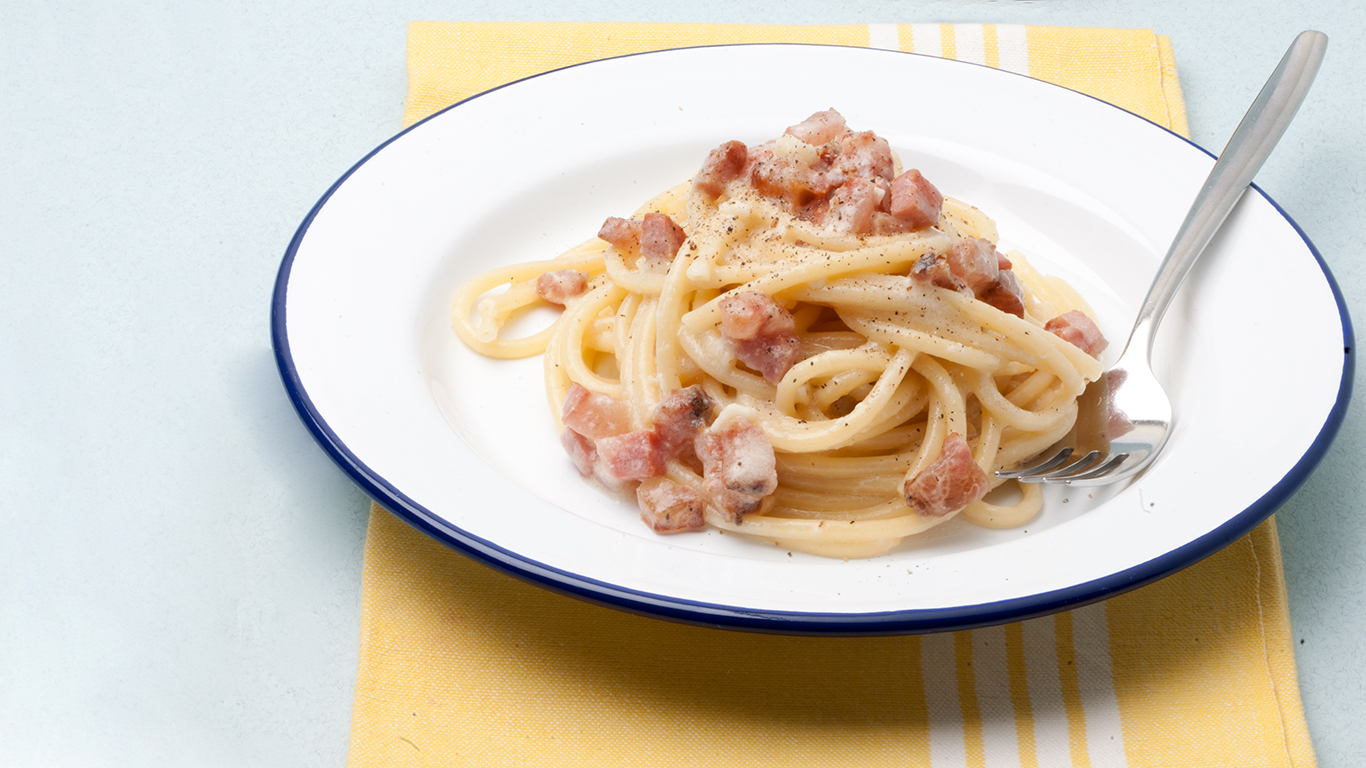
Alla gricia
The origin of this traditional Roman pasta dish’s name is uncertain, but it might refer to the Grici, 15th-century immigrants from the Swiss canton of Grisons, who were famous for their bread-baking skills. It is basically an eggless carbonara â just guanciale and pecorino cheese with a bit of olive oil, usually served on rigatoni. The New York Times opinion writer (and former restaurant critic) Frank Bruni, who reported last year that he ate the dish four nights in a row on a visit to Rome, noted that it can also be made with bucatini (thick spaghetti with a hole running through it), but that “It could probably be made with shoelaces and still be worth ordering.”
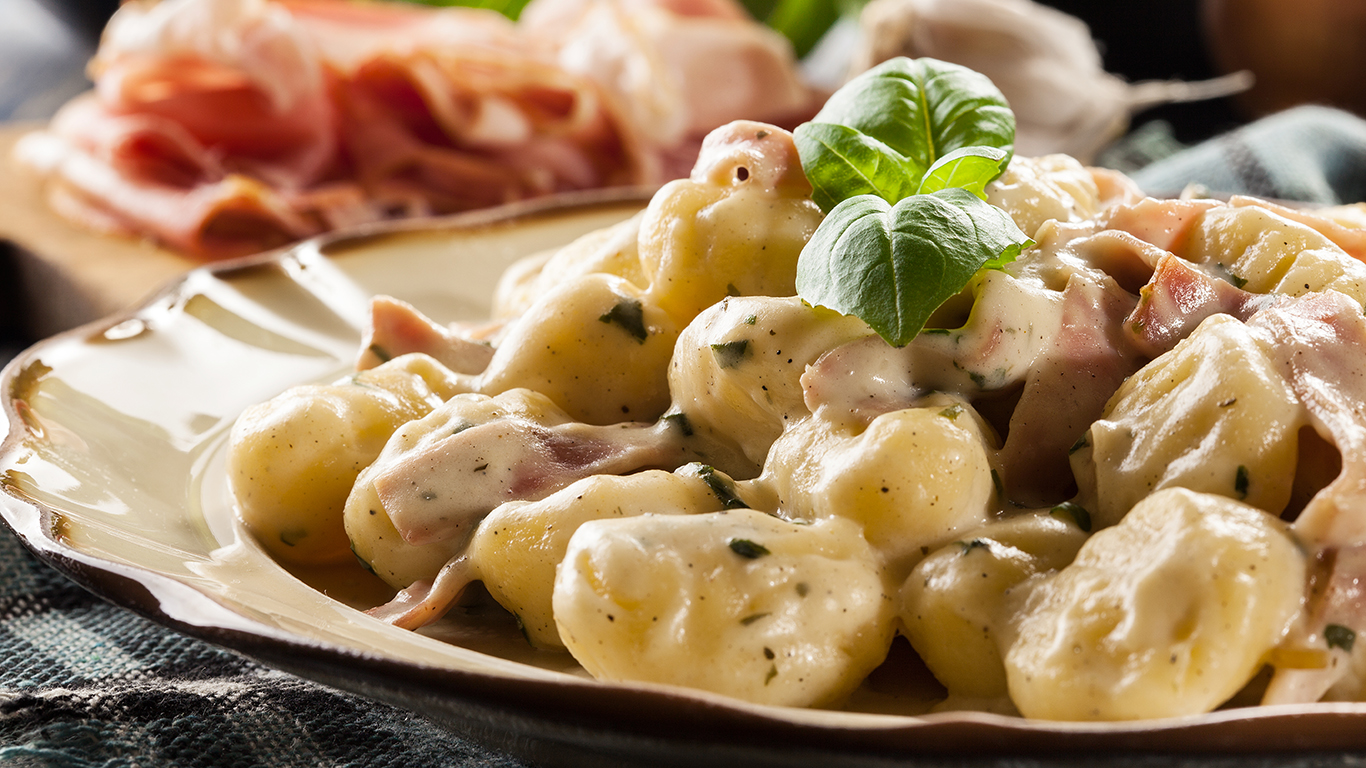
Alla valdostana
The Valle d’Aosta, or Aosta Valley, is Italy’s smallest region, nestled in the northwestern corner of the country between France and Switzerland. (French is an official language in the valley.) The local cooking is simple and hearty, and one of the most famous products is Fontina cheese â the basis for this rich pasta sauce. Cooked ham, cream, butter, and parmesan cheese fill out the recipe.
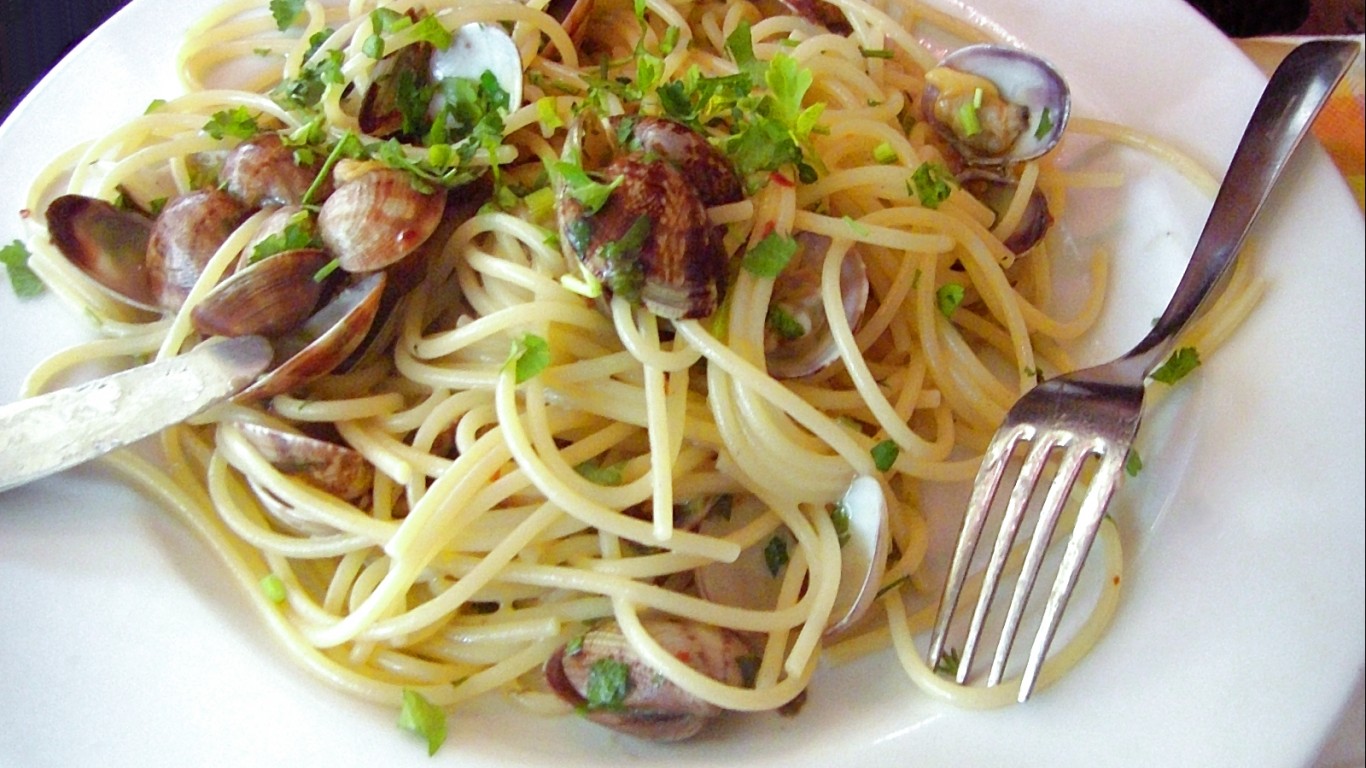
Alla vongole
Spaghetti (or linguine) with clams â “vongole” in Italian â may be made “rosso o bianco” â red (with tomatoes) or white (without). Either way, this Neapolitan dish is ideally made with “vongole verace” (real clams), otherwise known as cross-cut carpet-shell clams. The only other ingredients â in the bianco version â are white wine, olive oil, red pepper flakes, parsley, and plenty of garlic.
[in-text-ad-2]
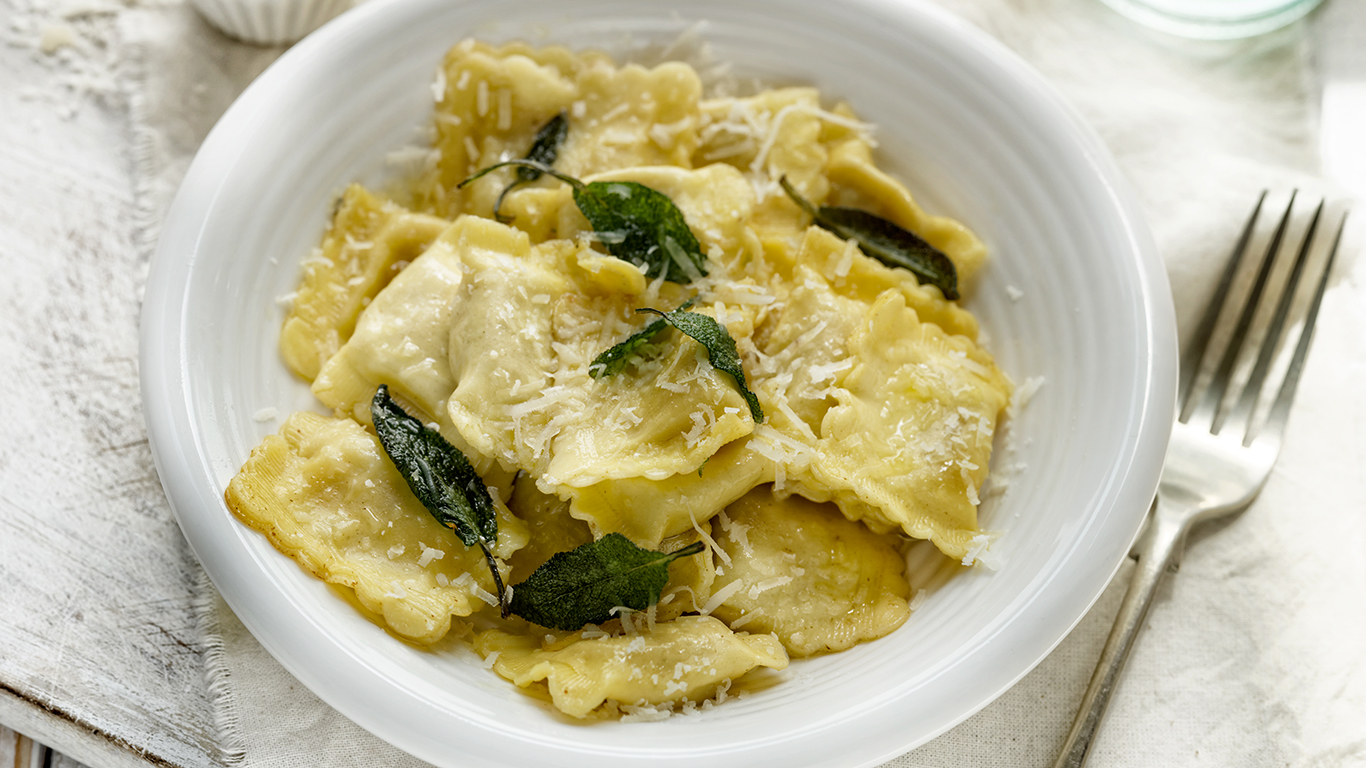
Burro e salvia
Most commonly served with stuffed pasta, like ravioli or tortellini, or sometimes with gnocchi, this is one of the simplest of all pasta sauces â just butter melted until it starts to brown, with fresh sage leaves stirred in. The pasta itself is usually served with parmesan cheese, but it’s not added directly to the butter.
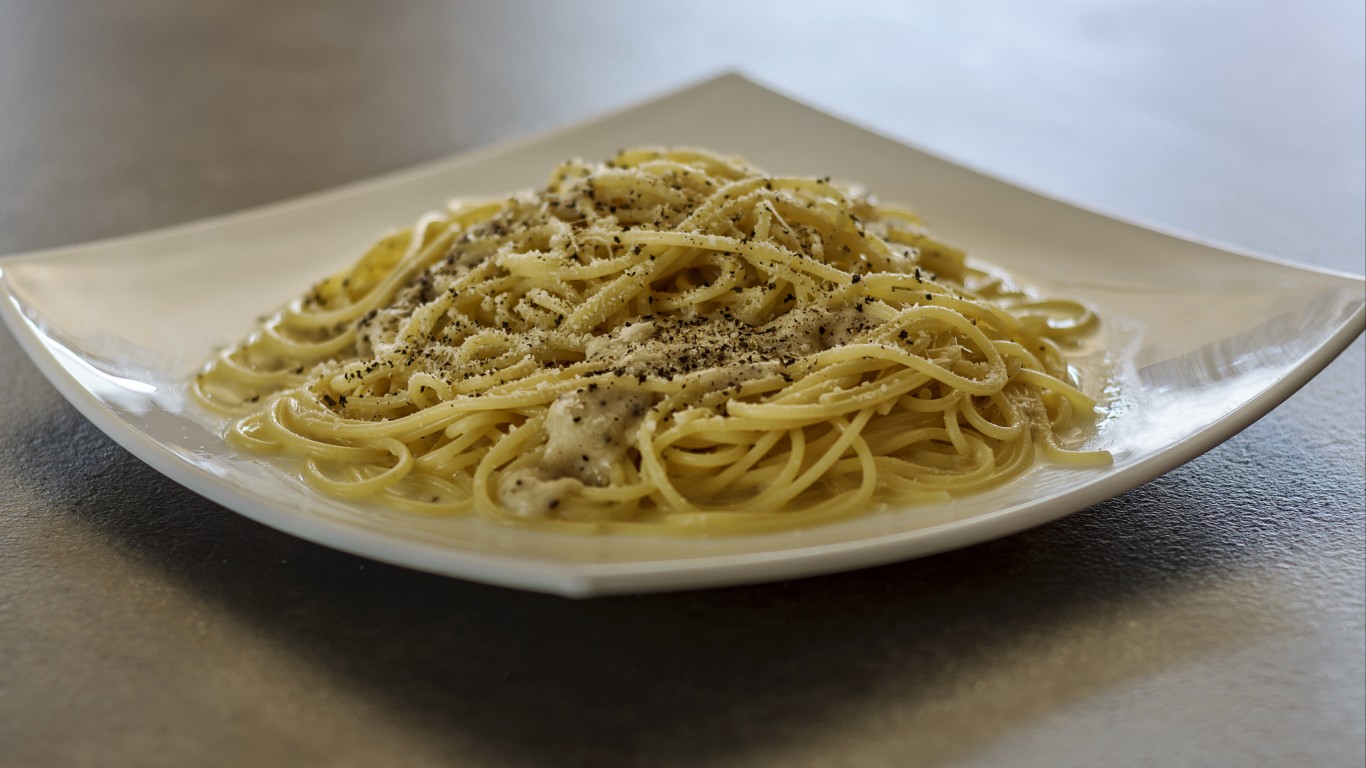
Cacio e pepe
As with another Roman pasta sauce, aglio e olio, the name is the recipe: cheese and pepper. The cheese is pecorino romano (some recipes add some parmesan, too), the pepper is black and preferably freshly ground. Add a little olive oil and you’re done.
[in-text-ad]
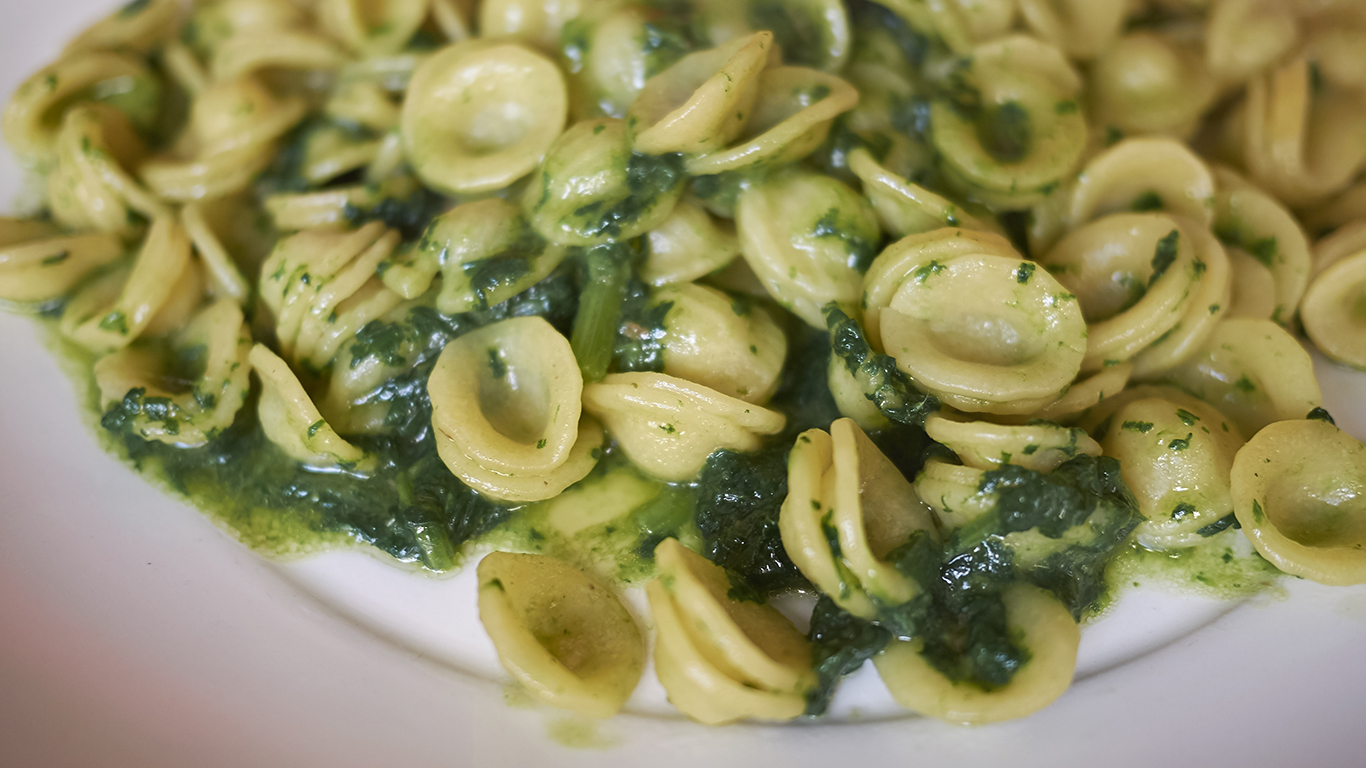
Con cima di rapa
Considered the emblematic dish of the southern region of Puglia, in the heel of the Italian boot, this straightforward dish of broccoli rabe with olive oil, garlic, red pepper flakes, and pecorino cheese is traditionally served with orecchiette, or “little ears” â small shell-shaped pasta that holds the chopped vegetable nicely.
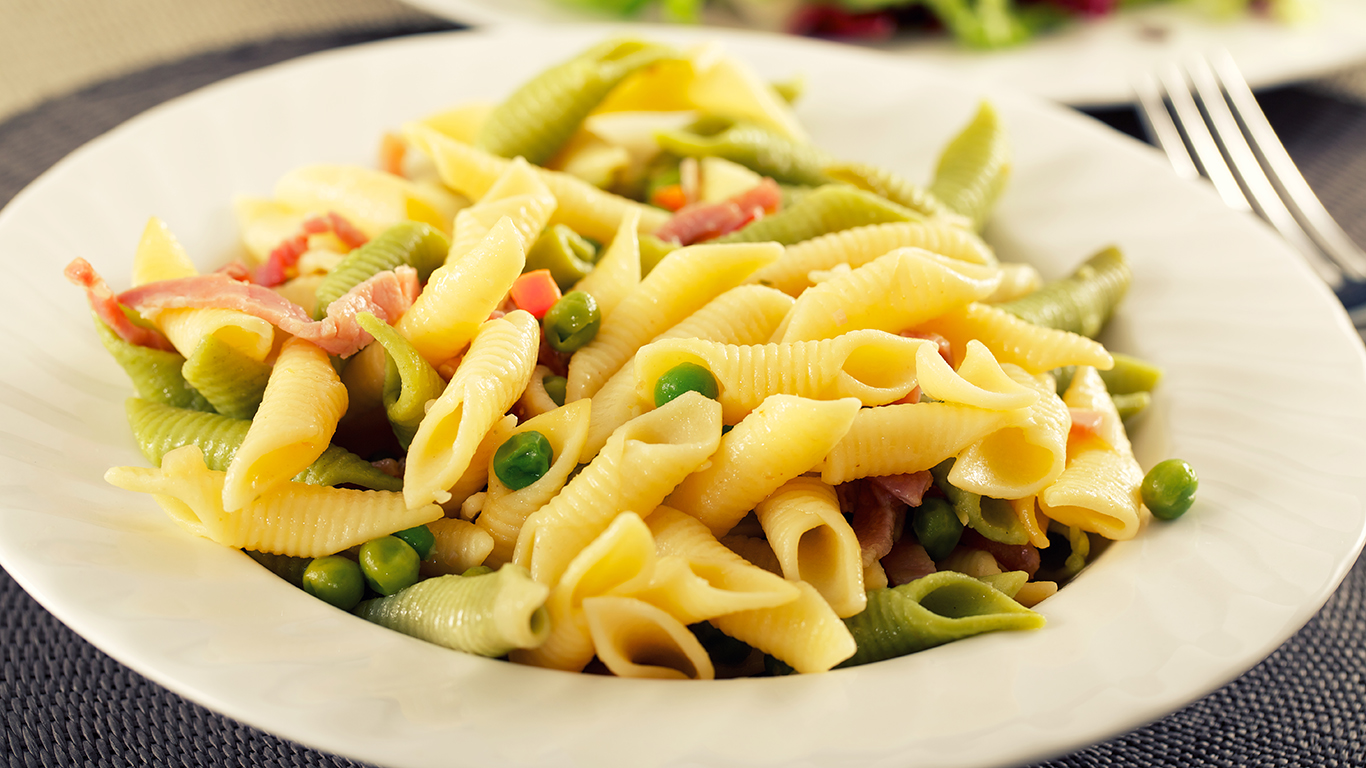
Con prosciutto e piselli
The Italian region of Emilia-Romagna is famous for its pasta dishes, its dairy products (including parmesan cheese), and its prosciutto. This typical recipe from the area ignores olive oil in favor of butter, then stirs in parmesan and prosciutto, as well as bright green peas. It is usually served with garganelli, short tubular shapes similar to penne.
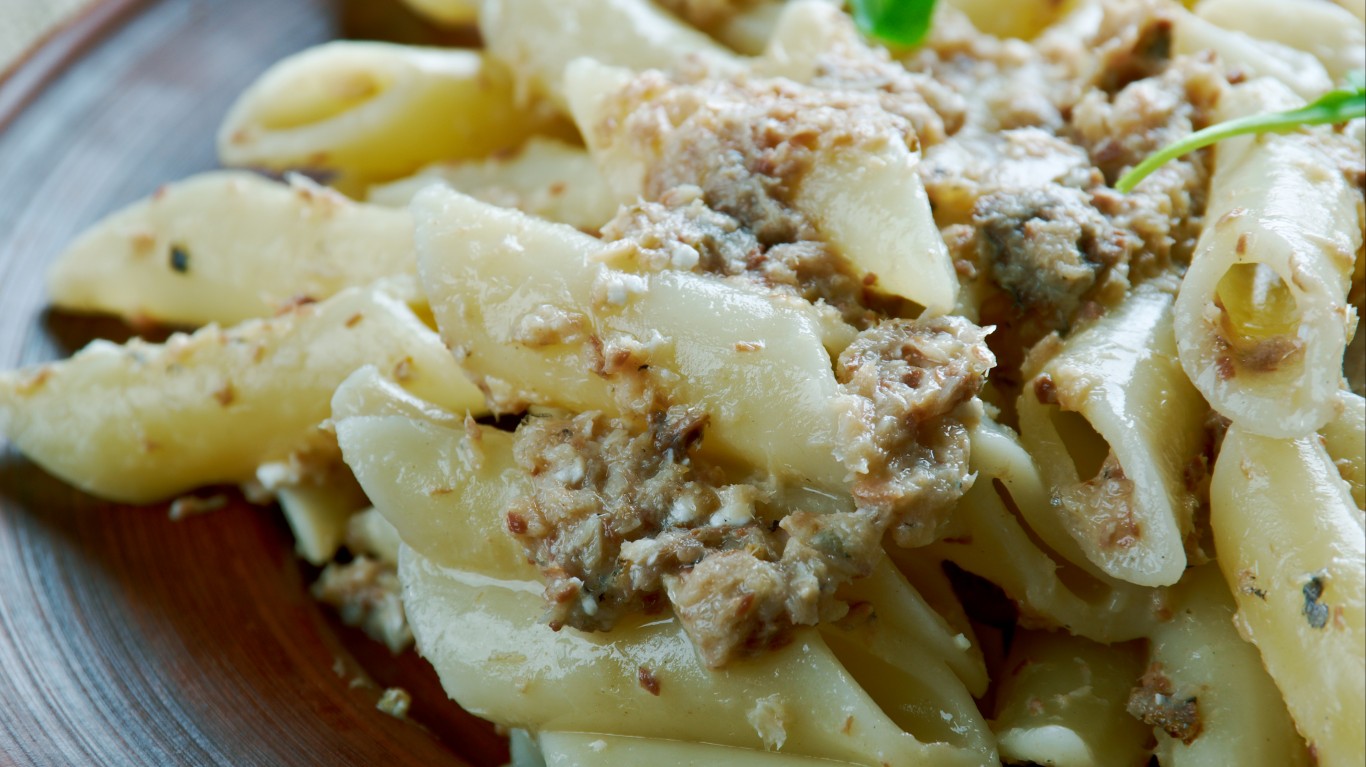
Con le sarde
The estimable food writer Paula Wolfert, a specialist in Mediterranean cuisines, wrote about the unique Sicilian pasta con sarde â with sardines â in the New York Times in 1985, and for a while it seemed as if the dish was suddenly on every Italian restaurant menu in Manhattan. Legend ascribes the creation of the dish to Arab cooks working for the Byzantine admiral Euphemius when he landed in Sicily. Its principal ingredients are sardines, anchovies, and fennel, all typically Sicilian. Though some recipes add a bit of tomato paste, the classic version adds only currants, pine nuts, onions, and olive oil, with a pinch of crumbled saffron.
[in-text-ad-2]
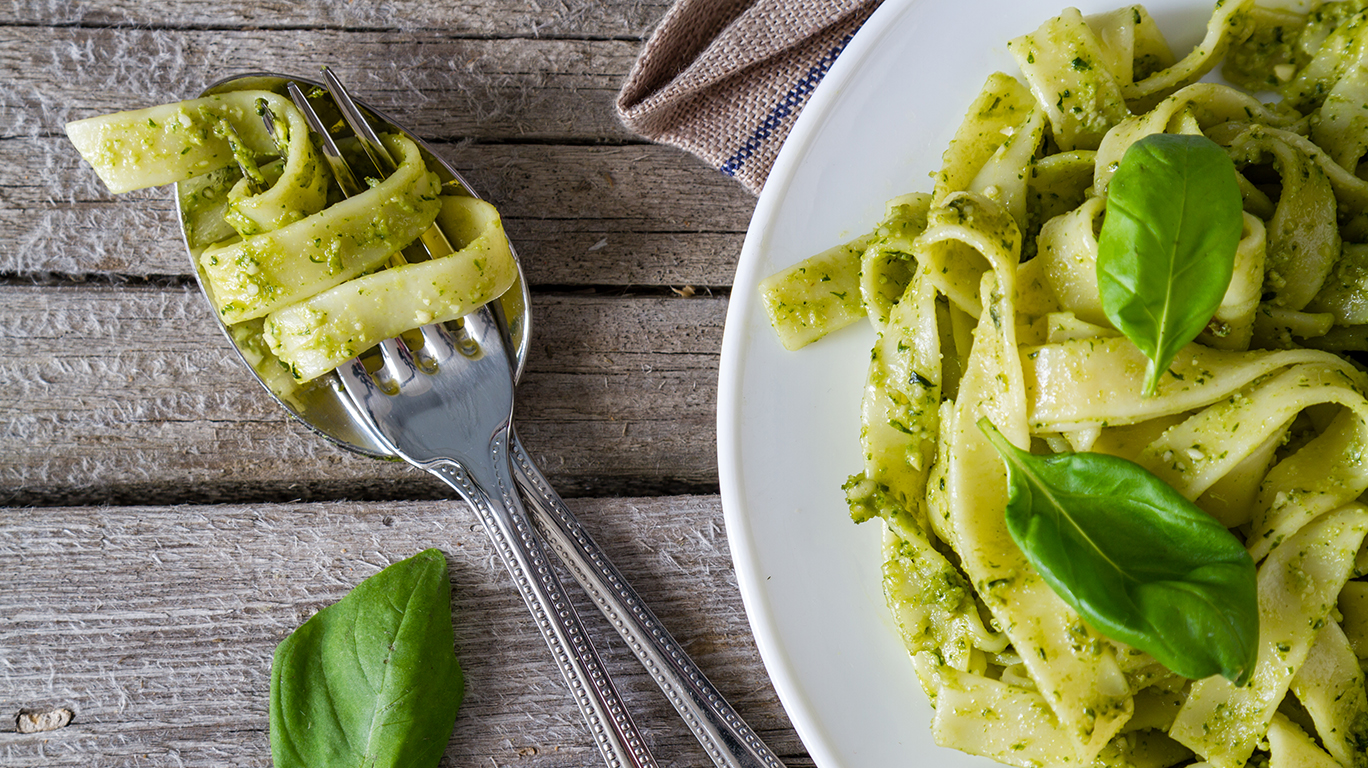
Pesto
This famous green sauce is often made in a food processor or blender for convenience, or sometimes, less conveniently, the ingredients are chopped into a rough purée with a knife or mezzaluna (a “half-moon” knife, crescent-shaped with a handle on each end). Traditionally, however, it is crushed or beaten (“pestare” in Italian) into a paste with a mortar and pestle â hence its name. Though there are variations using other herbs, the classic pesto, a specialty of Genoa and vicinity, is made with young, sweet Genoese basil, parmesan and/or pecorino cheese, pine nuts, garlic, and olive oil.
Get Ready To Retire (Sponsored)
Start by taking a quick retirement quiz from SmartAsset that will match you with up to 3 financial advisors that serve your area and beyond in 5 minutes, or less.
Each advisor has been vetted by SmartAsset and is held to a fiduciary standard to act in your best interests.
Here’s how it works:
1. Answer SmartAsset advisor match quiz
2. Review your pre-screened matches at your leisure. Check out the advisors’ profiles.
3. Speak with advisors at no cost to you. Have an introductory call on the phone or introduction in person and choose whom to work with in the future
Thank you for reading! Have some feedback for us?
Contact the 24/7 Wall St. editorial team.
 24/7 Wall St.
24/7 Wall St.


